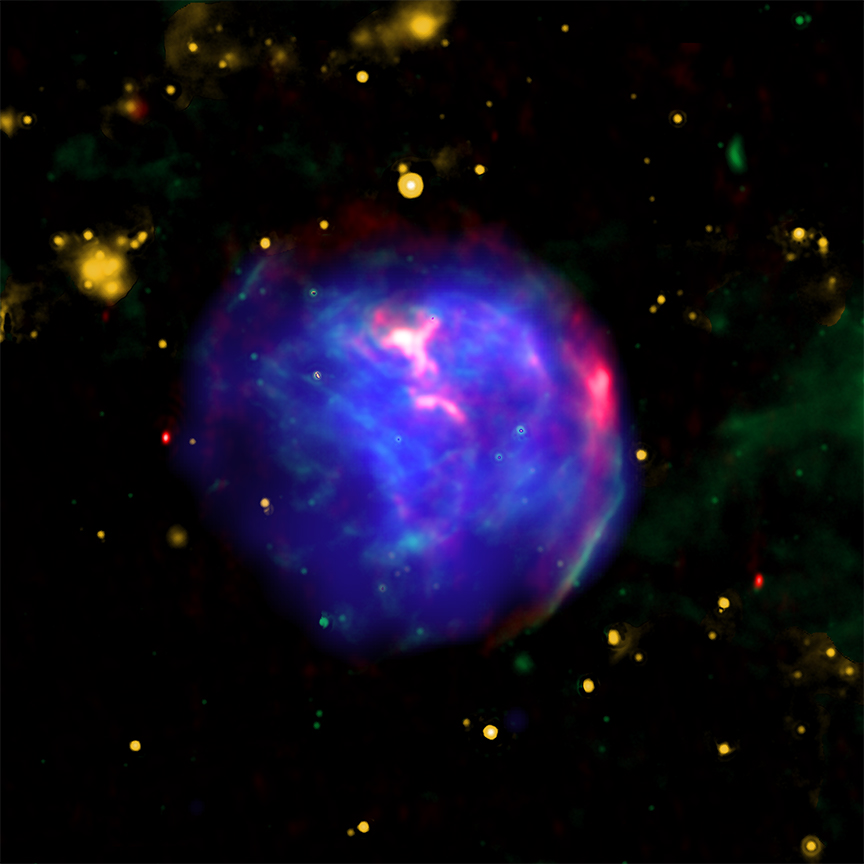
This image, which can be found at DailySpace.org, highlights the supernova G344.7-0.1. Light from this exploded star first reached Earth 3-6 thousand years ago. Located about 19,000 light years away, this still-hot nebula allows researchers to study the middle stages in a supernova’s slow expansion toward invisibility.
This particular nova is the result of a white dwarf star cannibalizing another star’s mass until it became unstable. Stars like ours will eventually puff off their outer atmosphere as planetary nebulae, and the remaining hot white dwarf is nothing more than the core of the original Sun-like star.
White dwarfs are supported by the pressure of all the electrons in the star. Electrons naturally repel one another, and due to the Pauli Exclusion Principle, electrons can only have certain energies. If a white dwarf gets too much matter added to it, the electrons can no longer support the star, and the system collapses and undergoes a wild nuclear explosion.
In this new composite image, researchers combined images from the Chandra X-ray Observatory, the now-retired Spitzer infrared telescope, and radio data from the Very Large Array and Australian Telescope Compact Array. The Chandra data showcases the sphere of the expanding nebula in an amazing false-color blue, and like a bubble in modern art, this bubble is painted with cooler infrared, or in false color, green – light where the shock appears to be interacting with the surrounding material. False colored red, radio emission data further highlights the structure of this expanding nebula.
The Chandra images in this composite were acquired to allow researchers led by Kotaro Fukushima to study the distribution of heavy elements in the nebula. Per their paper in The Astrophysical Journal, they found “a clear stratification of heavy elements with a centrally peaked distribution of the [iron] ejecta surrounded by intermediate-mass elements” like silicon, sulfur, argon, and calcium.
More Information
CXO press release
“Element Stratification in the Middle-Aged Type Ia Supernova Remnant G344.7-0.1,” Kotaro Fukushima et al., accepted to The Astrophysical Journal (preprint on arxiv.org)




 Join the Crew!
Join the Crew!
 Escape Velocity Space News
Escape Velocity Space News
0 Comments